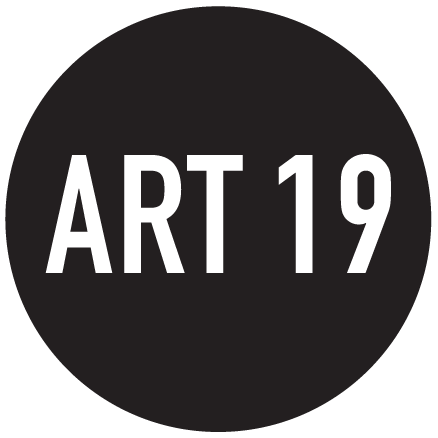Barron's : Second Part of Macklowe Collection Could Realize $200 Million.
By Abby Schultz, Feb. 18, 2022 8:37 am ET.
Gerhard Richter Seestuck (Seascape), 1975. Courtesy of Sotheby's
The second part of a vast collection of contemporary art acquired over decades by the real estate mogul Harry Macklowe and his former wife, Linda, was revealed on Friday by Sotheby’s.
The auction house will sell 30 additional pieces from the Macklowe collection—including landmark works by Mark Rothko, Gerhard Richter, and Andy Warhol —at a standalone sale on May 16 in New York that is expected to achieve in the region of US$200 million.
A previous standalone sale of 35 works previously owned by the Macklowes fetched US$676.1 million, with fees, in November, in the largest single-owner sale at an auction house, according to Sotheby’s.
Both sales stem from the former couple’s court-ordered divorce settlement, with proceeds divided evenly between them.
Mark Rothko, Untitled, 1960. Courtesy of Sotheby's
David Galperin, head of contemporary art, Americas, at Sotheby’s, describes the collection as “one of the most important” of 20th-century art ever assembled, and one that is striking for the depth of works for some of the greatest artists of the time.
“When you think about artists such as Mark Rothko, Gerhard Richter, Sigmar Polke—these are artists’s whose careers and contributions to art history can’t be measured by a single painting,” Galperin says.
The November Macklowe sale included Rothko’s No. 7, 1951, from a period when the artist’s abstractions were defined by “vibrant contrasting colors” and “experimentation with forms and geometric composition.” Nearly a decade later, in 1960, the artist becomes more introspective, and his color palette becomes “more atmospheric,” Galperin says.
No. 7, which sold for US$82.5 million with fees, featured three unevenly sized color blocks in pink, mustard yellow, and orange-red. Untitled, 1961, considered a “late masterpiece” by the artist, instead features “rich hues of burgundy, navy, dark purples and beautiful charcoal colors,” Galperin says.
Andy Warhol, Self Portrait, 1986. Courtesy of Sotheby's
“At a crescendo in [Rothko’s] career, where he is no longer experimenting with bright colors, he’s really focusing on moods and experiences,” he says. The work, which Sotheby’s said has never been seen publicly before, carries the highest estimate range of the sale—between US$35 million and US$50 million,
Sotheby’s gave a virtual tour of the second part of the collection from its London galleries on Friday that included the Rothko piece. The tour was moderated by Will Gompertz, artistic director at the Barbican arts center in London, and Eleanor Nairne, curator at the center.
This second part of the collection also includes a large-scale photorealistic work by Gerhard Richter titled Seestück (Seascape), 1975, that has an estimate between US$25 million and US$35 million. The work is one of four large seascapes by the artist that Galperin says capture his fascination with German romantic abstraction.
“When you see it in this scale, you feel the polarity between representation and abstraction that define the very best of Richter,” he says.
In November, the Macklowe collection featured a far different work by Richter— Abstraktes Bild, 1993, which realized US$33 million with fees.
“The spirit of the collection is marked by identifying the best points, or turning points, of each of these titanic artist careers,” Galperin says.
There’s also a monumental “fright wig” self-portrait—80-inches square—painted by Andy Warhol, not long before he died in 1987, in a vibrant camouflage pattern of yellow, green, blue, and purple. At the November sale, Sotheby’s sold Warhol’s Nine Marilyns, 1962, for US$47.4 million; the estimate for the self-portrait is between US$15 million and US$20 million.
Other works in the sale include two paintings by Sigmar Polke that again represent the arc of an artist’s career. Plastik-Wannen (Plastic Tubs), 1964, an early pop painting that Galperin says showcases Polke’s forays into capitalist realism, has an estimate between US$3.5 million and US$4.5 million, while The Copyist, 1982, illustrates his experimentation with abstractions and the use of chemical materials and different color paints. It has an estimate between US$3 million and US$4 million.
In the November Macklowe sale, Polke’s Rasterbild mit Palmen, 1966, sold for US$21.5 million, with fees, above a high estimate of US$12 million.
The May collection also features Jean Dubuffet’s Grand Nu Charbonneux, 1944. According to Sotheby’s, Dubuffet’s oil-on-canvas work marked a breakthrough moment for the artist. The estimate for the work is between US$4 million and US$6 million.
Highlights from the collection will be on view at Sotheby’s in London from Feb. 22-March 2, and will be shown in Palm Beach, Taipei, Hong Kong, and Shanghai before the sale in May.
Article published on https://www.barrons.com



